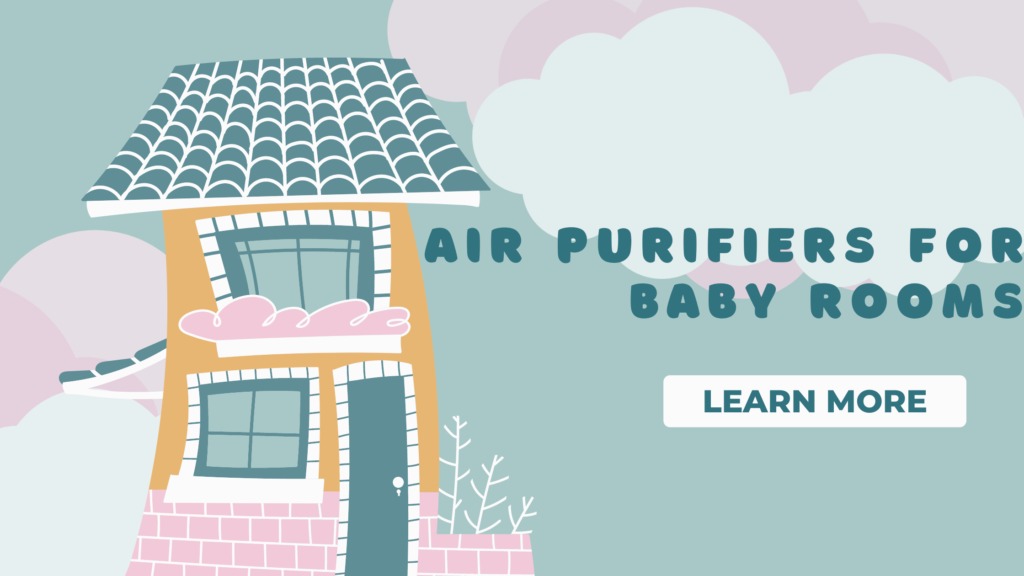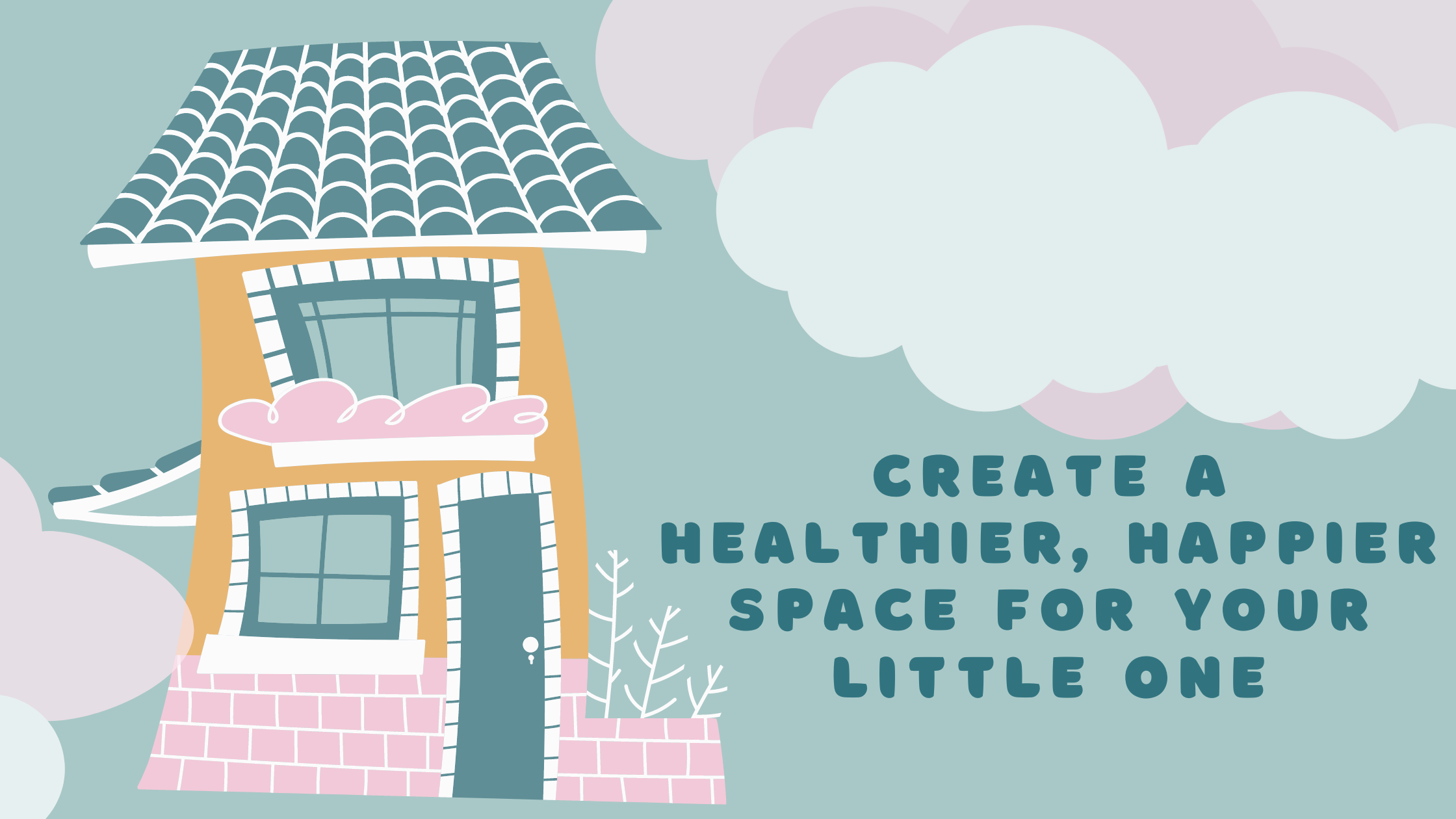Discover the top-rated air purifiers for baby rooms in 2024. Learn about the best models to create a healthier, cleaner environment for your little one, with features that ensure safety, quiet operation, and effective air purification.

Best Air Purifiers for Baby Rooms in 2024
Introduction
- Why Air Quality Matters for Babies
- Overview of Air Purifiers
Key Features to Look for in Air Purifiers for Baby Rooms
- HEPA Filtration
- Quiet Operation
- Safe Materials
- Ease of Use
- Compact Size
Top Air Purifiers for Baby Rooms in 2024
- 1. Dyson Purifier Cool TP07
- Features
- Pros
- Cons
- 2. Honeywell HPA300
- Features
- Pros
- Cons
- LEVOIT Core 300
- Features
- Pros
- Cons
- GermGuardian AC4825
- Features
- Pros
- Cons
- Blueair Blue Pure 411
- Features
- Pros
- Cons
How to Choose the Right Air Purifier for Your Baby Room
- Consider Your Room Size
- Evaluate Air Purifier Performance
- Check for Certifications and Ratings
- Consider Your Budget
Benefits of Using an Air Purifier in a Baby Room
- Improved Air Quality
- Reduced Allergens
- Enhanced Sleep Quality
Maintenance Tips for Air Purifiers
- Regular Filter Replacement
- Cleaning and Maintenance
- Monitoring Air Quality
Conclusion
FAQs
Introduction
When it comes to creating a safe and healthy environment for your baby, air quality is crucial. Babies have delicate respiratory systems, and poor air quality can lead to various health issues. Air purifiers are essential tools for ensuring the air in your baby’s room is clean and free from harmful pollutants. In this guide, we’ll explore the best air purifiers for baby rooms in 2024, helping you make an informed choice for your little one.
Key Features to Look for in Air Purifiers for Baby Rooms
1. HEPA Filtration
High-Efficiency Particulate Air (HEPA) filters are essential for air purifiers, especially in baby rooms. These filters are designed to capture at least 99.97% of airborne particles as small as 0.3 microns. This high level of filtration is crucial for removing common allergens such as dust, pollen, pet dander, and mold spores.
Benefits:
- Reduces Allergens: Helps in minimizing allergic reactions by trapping tiny particles that can irritate respiratory systems.
- Improves Air Quality: Ensures that the air your baby breathes is cleaner and free from pollutants that can impact health.
- Prevents Respiratory Issues: Particularly important for babies with asthma or other respiratory conditions.
When choosing an air purifier with HEPA filtration for a baby room, ensure that the filter is genuine HEPA and not a HEPA-type filter, which might not offer the same level of filtration. Regular maintenance and filter replacement are also important to keep the purifier functioning effectively.
Quiet Operation
Babies are sensitive to noise, and a loud air purifier can disrupt their sleep. When choosing an air purifier, look for models that operate quietly. Many modern air purifiers are designed with noise reduction in mind, offering a peaceful environment for your baby to rest.
Safe Materials
Safety is paramount when selecting an air purifier for a baby’s room. Ensure the purifier is made from non-toxic materials and does not emit harmful fumes. Avoid models with ozone-generating features, as ozone can be irritating to the respiratory system.
Ease of Use
An air purifier should be easy to operate and maintain. Look for user-friendly controls and straightforward filter replacement procedures. Many air purifiers come with features such as intuitive touch screens or remote controls, making them convenient to use.
Compact Size
Baby rooms are often small, so a compact air purifier is ideal. A smaller unit will fit neatly into the room without taking up too much space, yet still offer effective air purification.
Top Air Purifiers for Baby Rooms in 2024
1. Dyson Purifier Cool TP07
Features
- HEPA and activated carbon filtration
- Air Multiplier technology for even air distribution
- Quiet operation
Pros
- Sleek design
- Efficient at removing allergens and odors
- Adjustable airflow
Cons
- Higher price point
- Requires regular filter changes
2. Honeywell HPA300
Features
- True HEPA filter
- Three air cleaning levels
- Turbo Clean setting
Pros
- Affordable
- Effective for larger rooms
- Easy to use and maintain
Cons
- Can be a bit noisy on high settings
- Larger footprint
3. LEVOIT Core 300
Features
- True HEPA filter
- Compact and portable
- Multiple filtration stages
Pros
- Quiet operation
- Energy-efficient
- Budget-friendly
Cons
- Smaller coverage area
- Filter replacement can be costly
4. GermGuardian AC4825
Features
- HEPA filter with UV-C light
- Lightweight and compact
- Three-speed settings
Pros
- Affordable
- Additional UV-C light for extra germ-fighting power
- Compact size
Cons
- Can be noisy on high settings
- Limited coverage area
5. Blueair Blue Pure 411
Features
- HEPA filtration
- Energy-efficient
- Sleek design
Pros
- Excellent air purification performance
- Quiet operation
- Modern design
Cons
- Higher initial cost
- Filter replacement may be pricier
How to Choose the Right Air Purifier for Your Baby Room
Consider Your Room Size
When selecting an air purifier, ensure it is suitable for the size of your baby’s room. Manufacturers provide coverage area recommendations, so choose a model that matches your room’s dimensions.
1. Consider Your Room Size
One of the most important factors when selecting an air purifier is ensuring it is suited for the size of your baby’s room. Air purifiers are typically rated based on the Clean Air Delivery Rate (CADR), which indicates how effectively they can purify the air in a given space.
Key Considerations:
- Measure the Room Size: Before purchasing, measure the square footage of the room. Most air purifiers specify the maximum room size they are designed to handle.
- Match the CADR to Room Size: Choose a purifier with a CADR that corresponds to the size of the room. For a baby’s room, it’s ideal to pick one that can effectively purify the air without running constantly on high settings.
- Avoid Overloading: A purifier meant for smaller rooms may struggle to clean a larger space, while one that is too powerful for a small room may be unnecessarily noisy and consume more energy.
For the best performance, ensure that the air purifier’s capacity fits your room size to maintain a healthy environment for your baby.
Evaluate Air Purifier Performance
Check the air purifier’s Clean Air Delivery Rate (CADR) to understand how effectively it cleans the air. Higher CADR ratings indicate better performance.
Check for Certifications and Ratings
Look for certifications from organizations such as the American Lung Association or the Association of Home Appliance Manufacturers (AHAM). These certifications ensure the air purifier meets specific safety and performance standards.
Consider Your Budget
Air purifiers come in a range of prices. Determine your budget and select a model that offers the best value for your money while meeting your specific needs.
Benefits of Using an Air Purifier in a Baby Room
Improved Air Quality
Air purifiers significantly enhance air quality by removing pollutants, allergens, and harmful particles. This leads to a cleaner and healthier environment for your baby.
Reduced Allergens
By capturing allergens such as dust, pollen, and pet dander, air purifiers help reduce the risk of allergies and respiratory issues in babies.
Enhanced Sleep Quality
Cleaner air promotes better sleep by reducing irritants that can cause discomfort or disrupt sleep patterns. An air purifier can help ensure your baby sleeps more soundly.
Maintenance Tips for Air Purifiers
Regular Filter Replacement
To maintain optimal performance, replace filters as recommended by the manufacturer. Regular replacement ensures the purifier continues to capture pollutants effectively.
Cleaning and Maintenance
Keep the air purifier clean by wiping down the exterior and checking for dust build-up. Follow the manufacturer’s cleaning instructions to ensure longevity.
Monitoring Air Quality
Use air quality monitors to track the effectiveness of your air purifier. Many models come with built-in sensors that provide real-time air quality updates.
Conclusion
Choosing the right air purifier for your baby’s room is crucial for maintaining a healthy environment. Consider features such as HEPA filtration, quiet operation, and safe materials to ensure you select the best option. The models listed above are among the top choices for 2024, each offering unique benefits to suit different needs and preferences. By investing in a quality air purifier, you can create a cleaner, safer space for your baby to grow and thrive.
FAQs
1. How often should I replace the filter in my air purifier?
Filter replacement frequency depends on the model and usage. Generally, HEPA filters should be replaced every 6-12 months. Check the manufacturer’s recommendations for specific guidance.
2. Can I use essential oils in my air purifier?
Most air purifiers are not designed to handle essential oils, as they can damage the filters. Consult the manufacturer’s guidelines before adding any substances.
3. What size air purifier do I need for a small nursery?
For a small nursery, choose an air purifier designed for rooms up to 200 square feet. Check the specifications for coverage area to ensure it meets your needs.
4. Are air purifiers safe to leave on overnight?
Yes, most air purifiers are designed to run continuously and can be safely left on overnight. Look for models with low noise levels to ensure minimal disturbance.
5. How do I know if my air purifier is working effectively?
Monitor the air quality indicators on your purifier, check for any visible improvement in air quality, and regularly replace filters as recommended. An effective air purifier should significantly reduce airborne particles.


1 thought on “Top-Rated Air Purifiers for Baby Rooms in 2024: Create a Healthier, Happier Space for Your Little One”